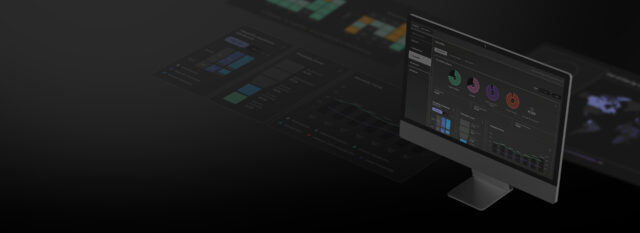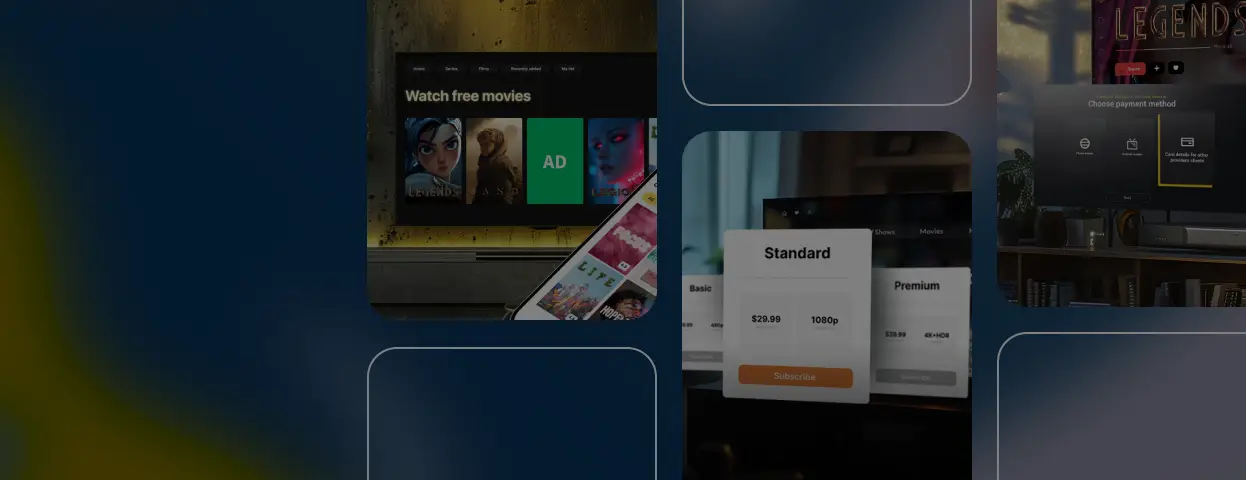We often hear the complaint, “I’m likely to become an addict.” A good thing is it may be not about food or cigarettes. A bad one is that people are talking about TVs. With a bunch of channels under one belt, smart TV is perceived as a ‘safe haven’ where viewers escape from irritating chores, getting absorbed into favorite content.
No wonder that the smart TV market is predicted to reach about $200 billion in revenue by 2025, according to Market Research Future. With the evolution of the smart TV market devices and software, the audience multiplies their demands.
The industry can’t fully get rid of the viewers’ skeptical remarks such as “the smart TV app landscape can be smarter”, thus being more and more concerned about the question, “How to serve a perfect dish to the audience whose tastes are becoming more exquisite?”
Polishing the recipe seems to be a never-ending process, but at least let’s try to discover some smart TV app’s secret ingredients together with Alexey Zaberezhniy. He’s a video solution system analyst at Oxagile, smart TV app development company with the expertise in online video, who’s willing to share the best “app cooking” practices.
Do we need to constantly add brand new ingredients to a proven smart TV app formula or opt for traditional recipes?
Modern technologies and their development speed do not allow us to believe in one and the same tools for years. We see many capabilities emerging such as catch-up TV or voice search. Still, it doesn’t mean you should rely solely on innovation. EPG or TV archives for smart TV streaming are a necessity rather than luxury. The same is about HD, Ultra HD, and adaptive streaming.
But you’ll hardly amaze users with good old industry standards as they thirst for a breathtaking experience flavored with innovative features. So a winning formula here is a blend of well-established core parameters and innovations.
Which component would you mention first to make a smart TV app dish taste delicious even for capricious degustators?
Interactive viewing experience is definitely on my short list. The ability to directly interact with viewers and get feedback is a unique characteristic of smart TV apps, so why not capitalize on it?
Talking to viewers is the best way to get unbiased feedback to further predict consumers’ demands. A media streaming service can ask viewers directly about their likes and dislikes via a dialog box on a TV screen or analyze their activity within the app. That’s how you’re exploring what content, when, and how a user consumes.
As for many the mere watching is no longer attractive, a remote control allows streaming a TV show, turning viewers into participants, or providing interactive betting during a live sports stream.
“… Finally Bob is back home after an exhausting working day. The only thing he wants is to crash on the couch and delve into the TV show that makes his personal Top 10. But then he has to force the way through complex navigation, and the excitement disappears in a snap.” What’s wrong with the smart TV app recipe in this particular case?
“The simpler, the better” rule has never been so true as now, when we’re talking about smart TV navigation. Most video content providers today stick to the 5-screens paradigm when the same content can be accessed simultaneously from multiple devices.
So a good solution here would be to provide the convergence of screens, “extending” UI to mobile, laptops, or other devices.
Advanced profile settings? Welcome to build them on mobile devices! Easy-to-use search functionality? One button on a TV remote control to help you trigger a screen for text input on your mobile device is enough. All for the sake of convenience — a user types their search query, relying on all filters available, and sends the result back to a TV screen to enjoy what they have been looking for.
Let’s go back to our hero Bob coming home and longing for smart entertainment. What are the other essential UX ingredients to bring real value to him and other viewers?
UX is tricky — do not bring too many elements in order not to “oversalt”. Despite new smart TV opportunities constantly arriving, the number of buttons on a remote control is rapidly decreasing, as a well-thought-out approach to smart TV design implies utmost simplicity and a native look and feel.
For each screen, one clear focus and 2-3 simple actions made by users are enough. The ideal scenario for Bob is to start an app, make a few clicks, and begin watching.
To implement this workflow, you need to introduce smart content recommendations and a well-arranged hierarchy of screens.

Are there any smart TV app culinary masterpieces with the convergence at its core your team contributed to?
Being pushed forward by the necessity to respond fast to the market demands, one of our clients reached out to Oxagile’s team to accelerate the development for smart TVs and other platforms.
To foster the delivery, we started working on a front-end framework. It let our client go live quickly with new apps for multiple platforms using a low-code option. While we were centered around finding the convergence of the app functionality, the right balance between an easy-to-follow UI and platform-specific components was found as well.
Could you unveil any extra ingredients for smart TV app development to help the market attract, engage, and retain viewers?
There are a bunch of powerful ad selection solutions to support individual content recommendation scenarios on the smart TV market.
Based on a granular analysis of user watching behavior (when the playback is started, what is played, when and what is skipped, etc.) complemented by an interest-based matrix built around data from third-party sources such as social media, search engines, and ecommerce platforms, video content providers create customized content offerings for each viewer. They are also strengthening their influence on user engagement and successfully experimenting with different monetization options, including enhanced AVOD and FAST.
Let’s try to look into the future and foresee some promising trends for the smart TV market.
Today, OTT providers and MVPDs lean towards aggregating as much content as they can within a single service. Chasing popularity, one video service may offer hundreds of channels and millions of shows, movies, and series. Do you imagine the users’ reaction when they’re drowning in ample content offerings?
On the one hand, switching on TV, browsing through channels, and the passive consumption of what is streamed sounds not as terrible. But on the other hand, what about the viewers who are dreaming of their favorite shows from the early morning?
I believe that a promising direction on the smart TV market is guiding users through the thick woods of content with smart and powerful recommendations. And now I’m talking about the next step, not the one mentioned above. The key is to shift to an individual user, with their unobvious expectations and hidden desires.
Do you mean that personalization is no longer about housewives, football fans, businessmen, plumbers, or another cohort?
Exactly. Media streaming providers should look deeper and touch the heart strings of Bill, Mary, or our fellow Bob, as this approach is about care on top of the customer focus. And it looks like the most wanted by users and the most efficient for online video businesses.
How to put it into practice? Data intelligence and machine learning skills enter the arena and help to find the solutions to hyper-personalization challenges.
It seems we’ve just found the topic for the next conversation…
And I’d be delighted to expand on it.
























